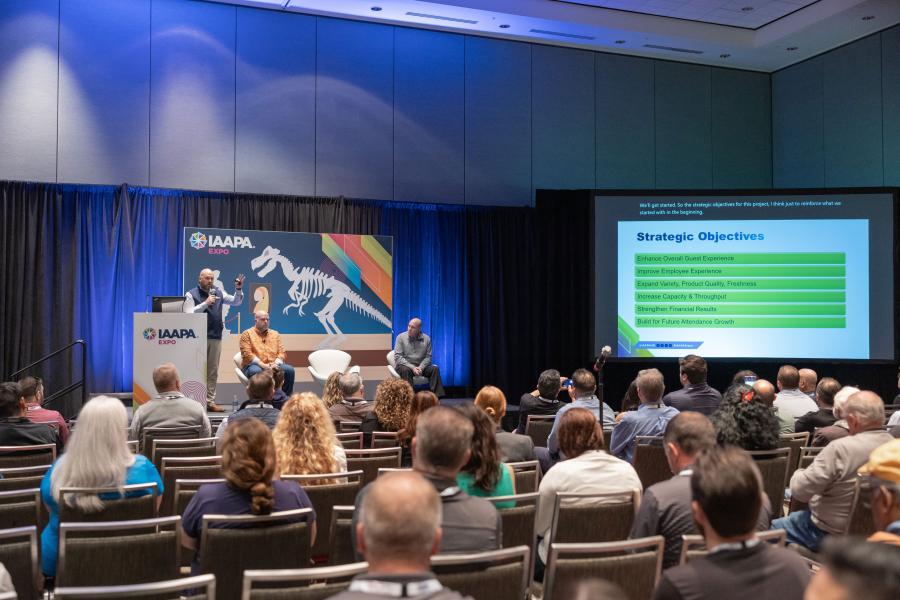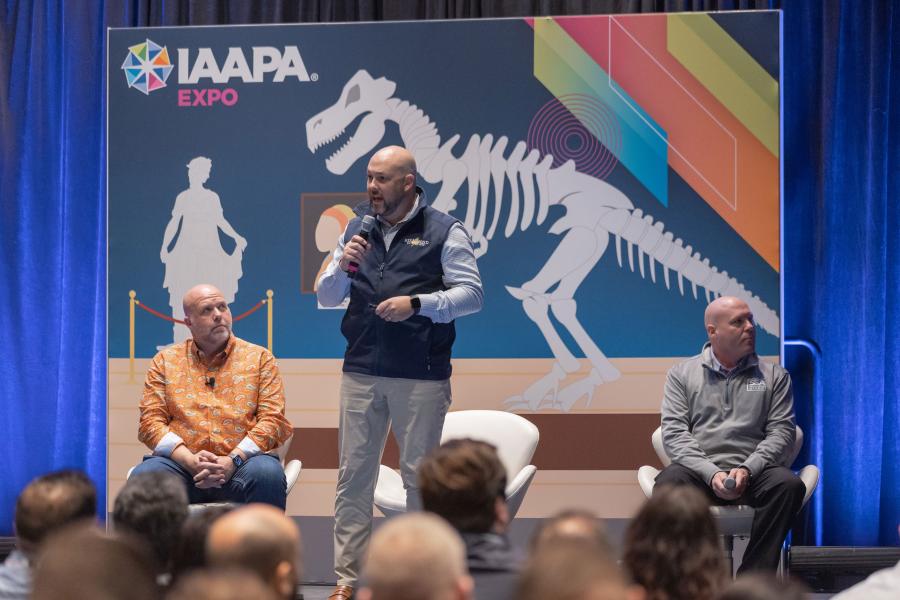Anyone familiar with dining strategies at attractions recognizes the endless number of ideas and suggestions into creating successful food and beverage (F&B) operations. However, case studies deliver valuable action-and-result analyses, and that’s precisely what the “Food and Beverage Case Studies” EDUSession provided.
The speakers were Jeremy Hoyum, senior vice president at Urban Air Adventure Parks; Gary Gochenour, regional vice president at SSA Group; and Louie Quagliana, vice president at Herschend Family Entertainment.
Hoyum disclosed that at Urban Air, F&B was once an afterthought. “But as we grew and opened more parks, we had to go and figure out what was the potential for the future,” says Hoyum. “We now have 180 parks [in North America] and 200 under development.”
The company embarked on remodeling the F&B operations at its locations, but noted that even for a single-site family entertainment center (FEC), a remodel doesn’t require a huge budget. Hoyum added that the top strategic objective is increasing output capacity.
Hoyum presented two F&B case study examples, where one park spent $325,000, and the second park spent $125,000 on renovations. The common factors included enhancing both the guest and employee experience, establishing budget and ROI projections, increasing capacity and throughput, and improving product quality and variety, among others.
“Important facility considerations included creating an F&B facility layout and design, equipment requirements, capacity expectations, and point-of-sale count and placement,” he says.
The parks’ strategic objectives called for increased output capacity and birthday party upsells, plus reduced staff frustrations. Park 1 also wanted to increase café seating, and Park 2 looked to improve guest perception of the F&B program.
Both parks experienced impressive results, as each tripled its production capacity. Park 1 increased topline revenue by 30% and Park 2 by 43%. Further, Park 1 experienced an 18% increase in spending from birthday parties and Park 2 saw a 16% increase. Both parks achieved reduced F&B staff frustration.
On another case study, Gary Gochenour revealed how SSA Group helped the Texas State Aquarium in Corpus Christi significantly boost its F&B operations. He said it’s the fourth largest aquarium in the United States, and among the project goals was to modernize its F&B outlets; expand the product variety, quality, and freshness; address significant line-speed issues; and build for future attendance growth.
One transformation involved an old bird show location at the aquarium. The area is now a new restaurant called The Back Porch. It has limited seasonal hours due to its outdoor setting, but it’s simple, accessible, fast, and inviting, with a menu featuring upscale hot dogs, local sausage, and craft beers. The result is annual sales of $66,000 from 5,524 transactions, with an average sale of $12.
The Burger Barn, a former window-service counter, was not a popular establishment in the aquarium, so it operated on a rare basis. SSA Group converted it to Aqua Dolce, featuring an upgraded menu, exterior remodeling, and additional POS locations. These changes resulted in a per-capita lift of $.12.
Louie Quagliana reviewed the changes of a pizzeria with a very small kitchen at Dollywood called Victoria’s into a new pizza joint named Iron Horse. POS locations were increased by 250%; mobile ordering was introduced; seat count increased from 60 to 200; digital menu boards were installed; numerous upgrades were made to the kitchen; and the food offerings were greatly expanded.
The results were enormous, as per-cap spending increased 23%; the cost of goods sold decreased almost 4%; EBITDA increased 7.3%; and all guest metrics reached multi-year highs, including line speed, seating, cleanliness, value, and freshness. Employee morale and working environments also improved.



